コンプリート! appdata local temp outlook logging etl 115614-Appdata local temp outlook logging etl
In Vista, Windows 7/8/10 and newer, Outlook's secure temp folder is at C\Users\username\AppData\Local\Microsoft\Windows\Temporary Internet Files\ContentOutlook\8A0VMD3A, where 8A0VMD3A can be any random characters Type or paste this shortcut into the address bar of File Explorer to open the locationIn my side, I could not find the similar folder in the Windows\Temp folder and files in the C\Users\dylanz\AppData\Local\Temp Folder In my opinion, the BackgroundDownloadexe is to install extension and components for visual studio, And it is is called by one temporary file for VS which is in the "\Temp\2fe0kelecx0\\" folderAbout ETL Files Our goal is to help you understand what a file with a *etl suffix is and how to open it The Microsoft Event Trace Log file type, file format description, and Windows programs listed on this page have been individually researched and verified by the FileInfo teamWe strive for 100% accuracy and only publish information about file formats that we have tested and validated

Animus Prime Outlook Troubleshooting Enable Logging
Appdata local temp outlook logging etl
Appdata local temp outlook logging etl-The WiFietl, BootCKCLetl and ShutdownCKCLetl files are examples of circular log files in testing Other event trace sessions can preallocate disk space and write events to disk when triggered For example, Outlook when debug settings have been configured will write events to a log file when Outlook is closedVERBOSE Performing the operation "Remove Directory" on target "C\users\\AppData\Local\Temp\Outlook Logging" VERBOSE Performing the operation "Remove File" on target "C\users\\AppData\Local\Temp\Outlook Logging\OutlookTetl"


Oteledata Etl Files Being Created Causing Performance Issues And Space Issues
Only files in AppData temp folder will be removed and and not every time Need to get a bigger SSD User # 147 posts I don't let that rubbish near my PC but many programs can use a large amount of space in the AppData folder, Outlook (OST files or PST from older versions of Outlook) Local time 709 AM aest 3 March 21Introduction Often as Citrix Engineers and Administrators, we troubleshoot issues, and that involves inspecting log files Recently, I had a request from one of our customers to provide them with log file locations of all the Citrix products they use, and surprisingly I found that there was no centralized repository for log file locationsThe log files will be in the user's temp directory that can be found by typing %temp% in the Run box or File Explorer In File Explorer, select on the Outlook Logging folder and sort by Date Modified In most cases, you will only have to collect the Outlook*etl for analysis by Microsoft To do this
It has three subfolders;Note You can sort by Date modified to find the files that were created most recently Note The above steps 1 through 5 sets the following registry data Subkey HKEY_CURRENT_USER\Software\Microsoft\Office\xx0\Outlook\Options\Mail DWORD EnableLogging Value 1 The xx0 placeholder stands for 140 in Outlook 10, 150 in Outlook 13, and 160 in Outlook 16, Outlook for Office 365 andNow, hit the enter button (but do not forget to change user profile) When finding the location, then rightclick & select the New => Folder Rename a folder INetCacheContentWord Automatic Way To Word Could Not Create The Work File Check The Temp Environment Variable Office 19
By default, this folder is located in c\Users\username\AppData\Local\Temp Note that by default, the Local Settings and AppData folders are hidden The following table shows the location and content of the various plain text log filesThe user /appdata /local/ temp is a tricky one Outlook stores its 'backuppst' there (unless you moved it in settings) Other programs can leave "active" files and folders thereFor most users, the location is "AppData/Local/Temp" while for others it might be "LocalAppData/Temp" The size of the folder can vary from user to user It actually depends on the number of applications installed on your computer and the period for which the operating system has been installed



Etw Event Tracing For Windows And Etl Files Hacking Exposed Computer Forensics Blog


Jeff Schertz Jeff Schertz S Blog
For most users, the location is "AppData/Local/Temp" while for others it might be "LocalAppData/Temp" The size of the folder can vary from user to user It actually depends on the number of applications installed on your computer and the period for which the operating system has been installedFile location = C\Users\Ryan\AppData\Local\Temp\NetTraces\NetTraceetl Tracing session was successfully stopped You can open that ETL file with Windows Performance Analyzer, and also with NetMon (The latter will likely be more useful to you)In Vista, Windows 7/8/10 and newer, Outlook's secure temp folder is at C\Users\username\AppData\Local\Microsoft\Windows\Temporary Internet Files\ContentOutlook\8A0VMD3A, where 8A0VMD3A can be any random characters Type or paste this shortcut into the address bar of File Explorer to open the location



Solved How To Determine The Source Of Your Windows Updates On Windows 10 Up Running Technologies Tech How To S



Carbonite Support Knowledge Base
In my side, I could not find the similar folder in the Windows\Temp folder and files in the C\Users\dylanz\AppData\Local\Temp Folder In my opinion, the BackgroundDownloadexe is to install extension and components for visual studio, And it is is called by one temporary file for VS which is in the "\Temp\2fe0kelecx0\\" folderIt's not reasonable to expect anyone to open eightynine log files and foe each file, try to discern from the log entries whether the log file was generated by Outlook, It's not enough to simply say that Outlook log files are stored in the user's appdata\local\temp folderSpecifies an array of paths of Windows Update etl files to convert into WindowsUpdatelog The default value for this parameter is the Windows Update trace file directory for the current device The acceptable values for this parameter are The full path of a directory that contains one or more etl files The full path of a single etl


Outlook Logging Folder Consumes All Disk Space


2
Le dossier AppData situé sur le disque système de votre PC vous intrigue ?The WiFietl, BootCKCLetl and ShutdownCKCLetl files are examples of circular log files in testing Other event trace sessions can preallocate disk space and write events to disk when triggered For example, Outlook when debug settings have been configured will write events to a log file when Outlook is closedIl joue un rôle précieux pour vos applications en conservant des données importantes Explications



Att Ck Evaluations



Animus Prime Outlook Troubleshooting Enable Logging
The AppData folder includes application settings, files, and data unique to the applications on your Windows PC The folder is hidden by default in Windows File Explorer and has three hidden subfolders Local, LocalLow, and Roaming You won't use this folder very often, but this is where your important filesFor Windows 8 and higher versions C\Users\username\AppData\Local\Microsoft\Windows\INetCache\ContentOutlook Now, we have provided the default path for each of the operating systems But there is a small difference that comes into picture based on the version of your Outlook application as wellCompared to earlier versions of Microsoft Outlook, Outlook 10 and later versions provide an easy method to enable advanced logging through Event Tracing for Windows (ETW) When you enable ETW logging, an event trace log (etl) file is generated You typically use ETW logging on the Microsoft Exchange server where you have a mailbox
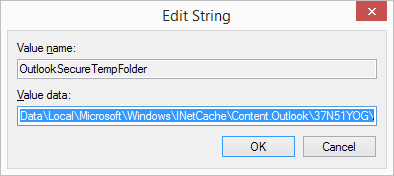


How To Delete Outlook Temporary Files In Windows 10


Jeff Schertz Jeff Schertz S Blog
File location = C\Users\Ryan\AppData\Local\Temp\NetTraces\NetTraceetl Tracing session was successfully stopped You can open that ETL file with Windows Performance Analyzer, and also with NetMon (The latter will likely be more useful to you)It won't start logging until you close Outlook and reopen it, but after that you should get some additional logging that may help track down the issue NOTE These logs may slow down Outlook, so if you notice a slowdown of Outlook after enabling these logs, you can always disable themMcAfee Agent 50x C\Users\\AppData\Roaming\McAfee\Common Framework\DB\Support DLL\DebugTraceFile ;



Outlook Client Logging
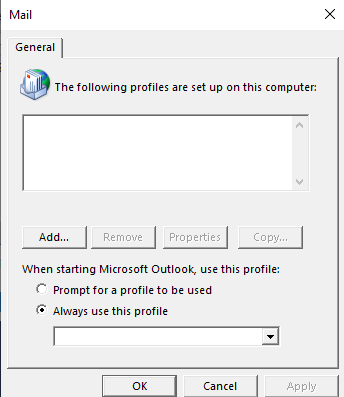


Olcfg Exe Outlook Mail Setup Strontic
Now, hit the enter button (but do not forget to change user profile) When finding the location, then rightclick & select the New => Folder Rename a folder INetCacheContentWord Automatic Way To Word Could Not Create The Work File Check The Temp Environment Variable Office 19I have over 50 GB of folders and files in the following directory C\Users\Chris\AppData\Local\Temp Can those files be removed?Local, LocalLow, and Roaming Open the AppData folder on Windows 10 Opening the AppData folder on Windows 10 is simple You can open it from a user's folder however, the AppData folder is hidden by default so even if you're inside a user's folder, you won't see it until you choose to show hidden files
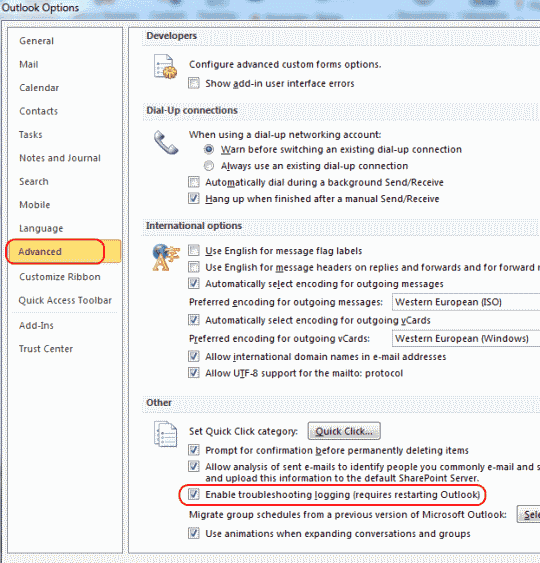


Outlook 16 Enable Disable Global Logging
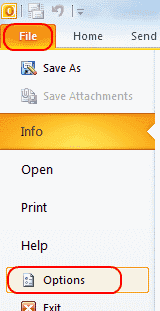


Outlook 16 Enable Disable Global Logging
In this article Original KB number Symptoms In your computer's %Temp% folder, you notice a very large file (for example, more than 1 GB) that's named OutlookexelogTable containing file paths and shortcuts for log filesThe log files are stored in subfolders of the Temp folder By default, your Temp folder is located in your \AppData\Local folder c\Users\ username \AppData\Local\Temp By default, the Local Settings and AppData folders are hidden
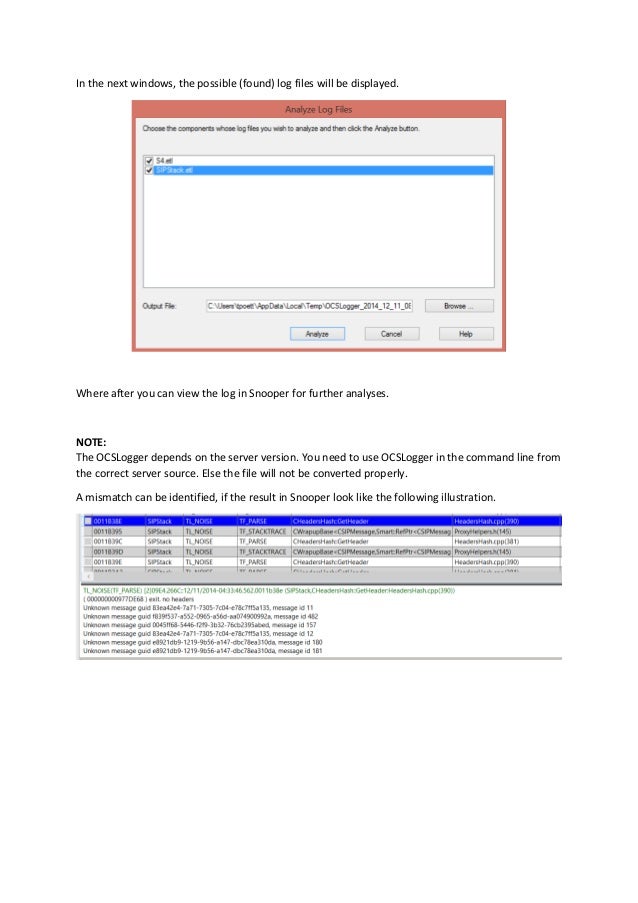


Skype For Business And Lync Troubleshooting Guide Version 1 0



How To Read Outlook Log Files
C\Users\AdministratorDOMAIN\AppData\Local\Temp\2\Tracing Most likely this location is void of any logging files, which might leave you scratching you head However, there is good reason for this you're logged in as a user on the server and as a result you're getting taken to the temp folder of the user you're logged in asLocal, LocalLow, and Roaming Open the AppData folder on Windows 10 Opening the AppData folder on Windows 10 is simple You can open it from a user's folder however, the AppData folder is hidden by default so even if you're inside a user's folder, you won't see it until you choose to show hidden filesC\Program Files\Microsoft\Exchange Server\V15\TransportRoles\data\Temp What is hprestlog and hpsut_servicelog, the two files under hpsut folder in the below path are occupying GB C\Windows\System32\config\systemprofile\AppData\Local\hpsut



My Teams Lab


Explore Outlook Etl Files
I've used Treesize Professional to check out the disk space and can see there's huge numbers of 3MB files in the "Outlook Logging" folder buried deep down under the "C\Users\username\AppData\Local\Temp\Outlook Logging\" path I did some googling and found that this could be due to Outlook Logging being enabledPage 1 of 2 Need a check posted in Virus, Trojan, Spyware, and Malware Removal Help Hi, From time to time my AM is giving me this message, with a different temp file What is it exacly?If you use Microsoft Outlook on the terminal server, you should know that Outlook is saving temporary files It creates this sort of files whenever you add or view an attachment You can find the folder with the temporary files here



Strange Recent Items When Attaching To Outlook Super User



Troubleshooting The Office 365 Hybrid Configuration Wizard Shane Jackson It Pro
The log files will be in the user's temp directory that can be found by typing %temp% in the Run box or File Explorer In File Explorer, select on the Outlook Logging folder and sort by Date Modified In most cases, you will only have to collect the Outlook*etl for analysis by Microsoft To do thisDescription The buffer manager cannot extend the file "C\Users\SQLSER~1\AppData\Local\Temp\DTB{3A5D52FFD2479FAB5F0F}tmp" to length bytes There was insufficient diskSelect On, using the dropdown menu for Logging Once enabled, the Open in Explorer option will appear beside the Logging status Clicking on Open in Explorer will open up the location of where your logs are saved By default this will be in C\Users\USER\AppData\Local\Temp\switch\logs



Troubleshooting The Office 365 Hybrid Configuration Wizard Shane Jackson It Pro


Explore Outlook Etl Files
In the above example, the installation log file is written to the C\temp directory Refer to the log file if your experience problems during silent installation Note When the log flag is not specified, the log_infolog file defaults to the C\Users\\AppData\Local\Temp\statsinstaller\statssub\ directory Use the help flag toNOTE A separate log file is created for each new instance of McTray, with up to historical files, plus one file for the currently active log Each log file is dynamically prunedC\Users\mrawlings\AppData\Local\Temp\Outlook Logging\OutlookTetl C\Users\mrawlings\AppData\Roaming\Citrix\SelfService\Icons\outlook13_ico C\Users\mrawlings\AppData\Roaming\Microsoft\Internet Explorer\Quick Launch\Microsoft Outlooklnk



Animus Prime Outlook Troubleshooting Enable Logging



Microsoft Windows Migration Software Collab365 Directory
It has three subfolders;C\Users\mrawlings\AppData\Local\Temp\Outlook Logging\OutlookTetl C\Users\mrawlings\AppData\Roaming\Citrix\SelfService\Icons\outlook13_ico C\Users\mrawlings\AppData\Roaming\Microsoft\Internet Explorer\Quick Launch\Microsoft OutlooklnkHow to remove temporary files from the Windows operating system Most issues with Autodesk software that involve excessive or corrupt temp files can be resolved by deleting the contents of a user's local temp folder To do this Exit all programs Press WINDOWSR on the keyboard to bring up the Run window Type %TMP% and then click OK Delete the contents of the folder that opens up Tip


Problem Post Migration To O365



My Teams Lab
Outlook 19, Outlook 16, Outlook 13, Microsoft Outlook 10, Microsoft Office Outlook 07, Outlook for Office 365;I was wondering where all my space was going prior to upgrading to Windows 10, I had GB free out of 240GB, when I upgraded to Windows 10, I had 114GB free, now I'm down to 104GB and then I see almost 50GB of stuff in this one folderDiscussed this further and we will not be turning the scripts on by default We will provide a script to turn on the logging when needed and if folks want to collect logging for containerd full time they will need to provide a logging agent that listens to the etw events holding for updates to not turn this on by defualt /hold



Animus Prime Outlook Troubleshooting Enable Logging



Temp Outlook Logging Etl



Citrix Workspace App 2102 Carl Stalhood



Temp Outlook Logging Etl



Animus Prime Outlook Troubleshooting Enable Logging
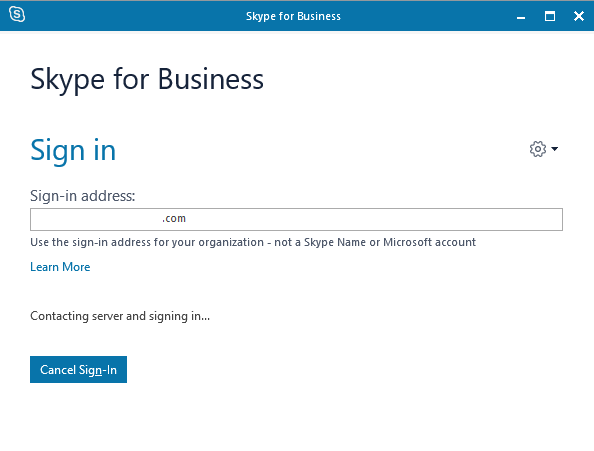


Troubleshooting Skype For Business External Sign In Issues And Examine The Client Sign In Process Matrixpost Net



Citrix Workspace App 2102 Carl Stalhood



Outlook Troubleshooting Enable Logging Animus Prime
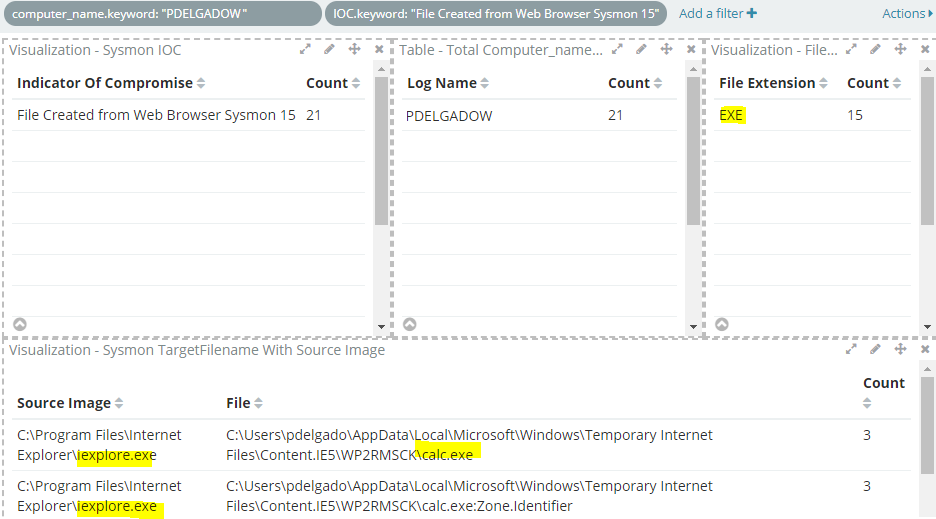


Labeling Endpoint Actions With Logstash Threat Hunting Syspanda


How To View And Parse Windowsupdate Log On Windows 10 Windows Server 16 Windows Os Hub



Outlook Etl File Viewer


Www Sans Org Reading Room Whitepapers Tools Practical Process Analysis Automating Process Log Analysis Powershell
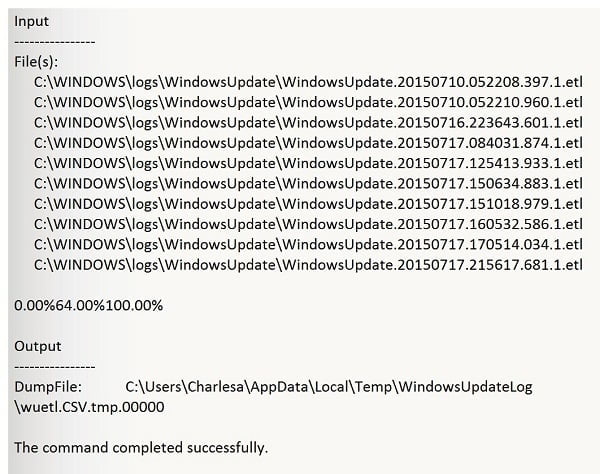


How To Find Windows 10 Update Logs And Read Using Powershell



Etw Event Tracing For Windows And Etl Files Hacking Exposed Computer Forensics Blog



Troubleshooting Skype For Business External Sign In Issues And Examine The Client Sign In Process Matrixpost Net



Temp Outlook Logging Etl



Temp Outlook Logging Etl



Avast Free Antivirus Files Folders And Registry Keys Find All Software



Troubleshooting The Office 365 Hybrid Configuration Wizard Shane Jackson It Pro



Netsh Trace Use It Chentiangemalc



Etl Logs Folder Enable And Collect Outlook Logs To Troubleshoot Profile Creation Issues



Etw Event Tracing For Windows And Etl Files Hacking Exposed Computer Forensics Blog



Af6c92e29eb8bda8b9aa5c1cfd0f21a592e5992c01db9ca0f Any Run Free Malware Sandbox Online
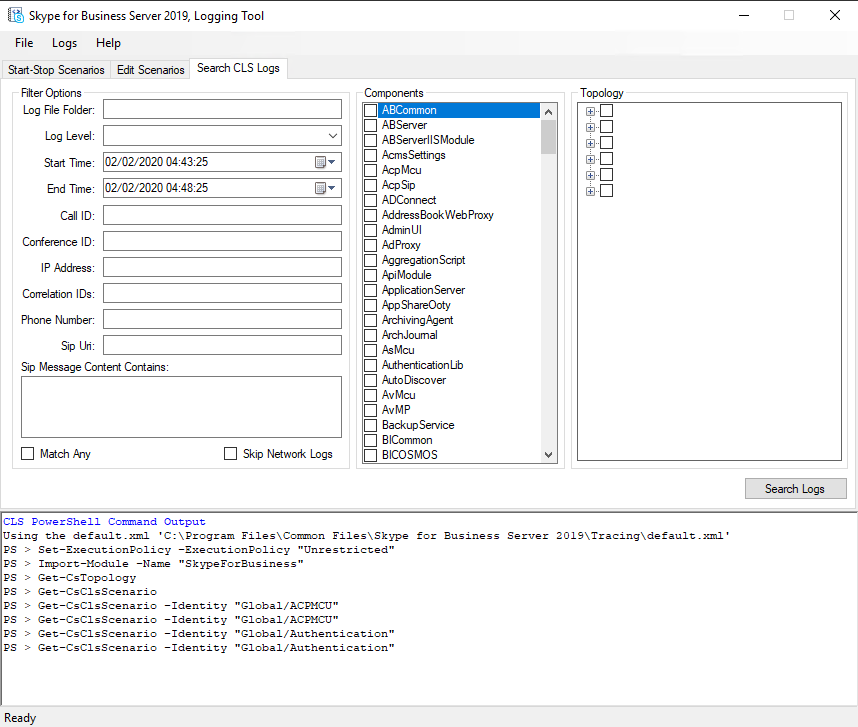


Troubleshooting Skype For Business External Sign In Issues And Examine The Client Sign In Process Matrixpost Net


How To View And Parse Windowsupdate Log On Windows 10 Windows Server 16 Windows Os Hub


Www Sans Org Reading Room Whitepapers Tools Practical Process Analysis Automating Process Log Analysis Powershell



Enable And Collect Logs For Profile Creation Issues Outlook Microsoft Docs



Animus Prime Outlook Troubleshooting Enable Logging



Troubleshooting Skype For Business External Sign In Issues And Examine The Client Sign In Process Matrixpost Net
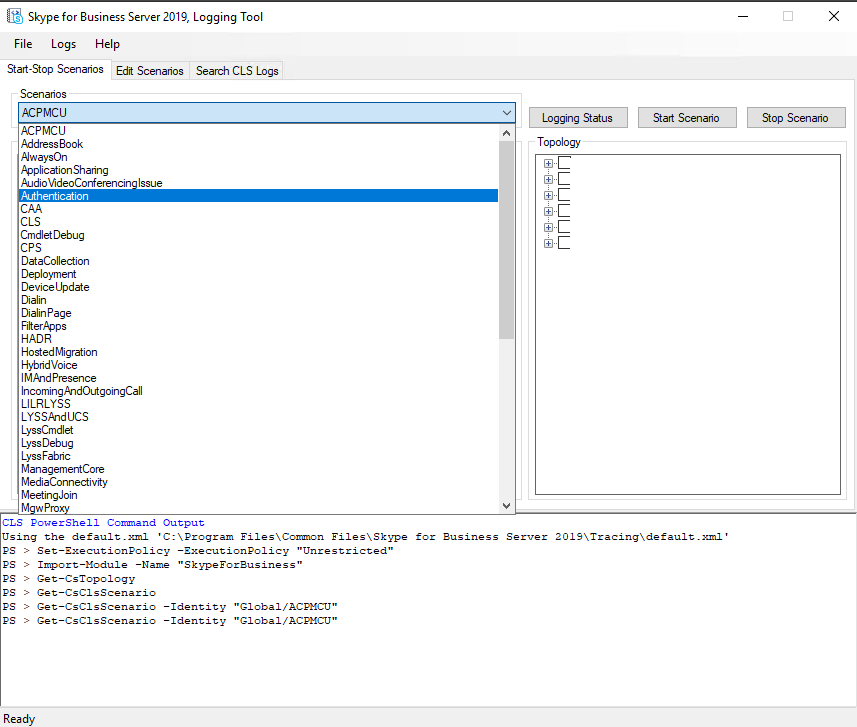


Troubleshooting Skype For Business External Sign In Issues And Examine The Client Sign In Process Matrixpost Net



Digital Forensics And Incident Response Jai Minton



System Windows Automation Elementnotavailableexception Issue 505 Microsoft Perfview Github
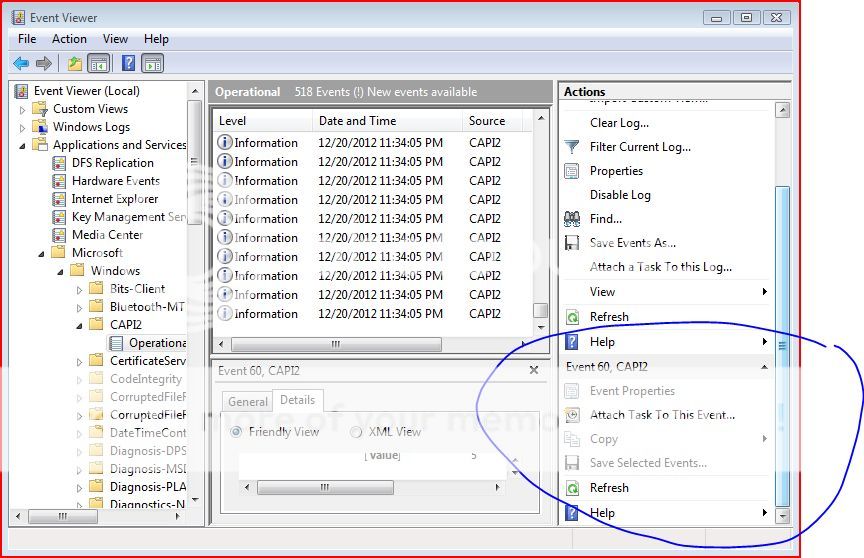


The Site S Security Certificate Is Not Trusted I Ve Tried Page 2 Virus Spyware Malware Removal


Outlook Logging Folder Consumes All Disk Space



Avoid Running Out Of Disk Space Ever Again Using Sql Monitor Redgate Software


Kb How To Collect Netsh Log Files When Troubleshooting Network Issues For Microstrategy Technical Support
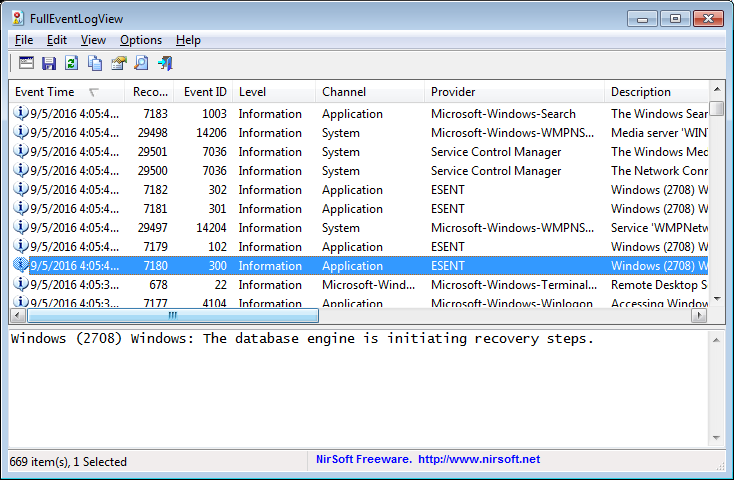


Fulleventlogview Event Log Viewer For Windows 10 8 7 Vista



Etw Event Tracing For Windows And Etl Files Hacking Exposed Computer Forensics Blog



Temp Outlook Logging Etl



Report Http Cookie Microsoft Windows
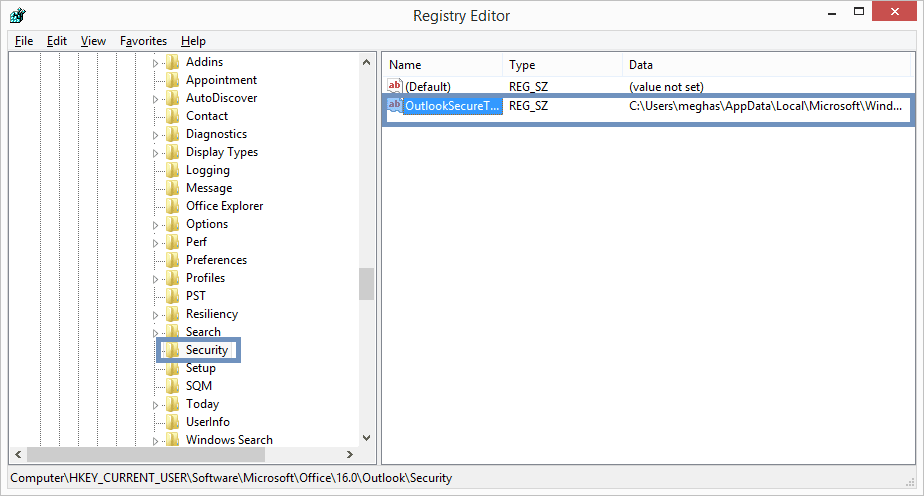


How To Delete Outlook Temporary Files In Windows 10
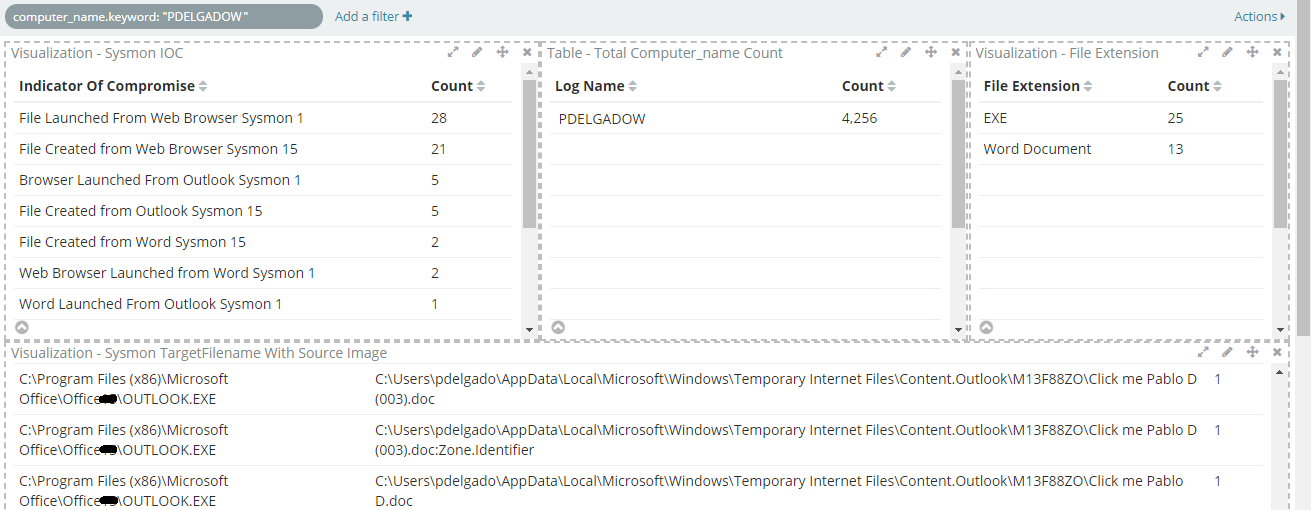


Labeling Endpoint Actions With Logstash Threat Hunting Syspanda



How To Properly Turn Off Outlook Windows Search Searchprotocolhost Logging Super User



Outlook Etl File Viewer



Outlook Logfiles Nutzliche Protokolle Fur Die Fehlersuche Tech Faq



Export Shared Mailbox To Pst Fails With Unknown Error Server Fault



The Old Reader



Temp Outlook Logging Etl


Www Hecfblog Com 18 06 Etw Event Tracing For Windows And Etl Html



Mcafee Support Community Mcafee Dlp 11 3 And Outlook 16 App Hang Mcafee Support Community



85bf9dd2db57b7903d0a1a6e9f1d66d6bed0c19ec09ec24 Any Run Free Malware Sandbox Online



Outlook Logging In Temp
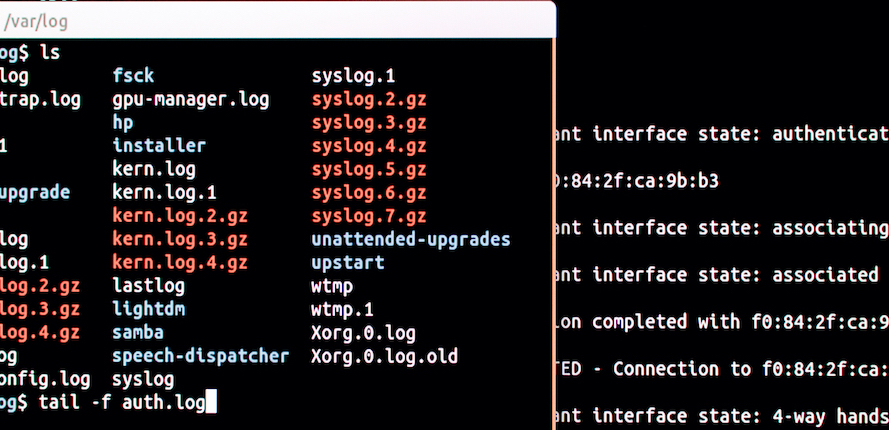


Reference Citrix Product Log Files Locations Ferroque Systems
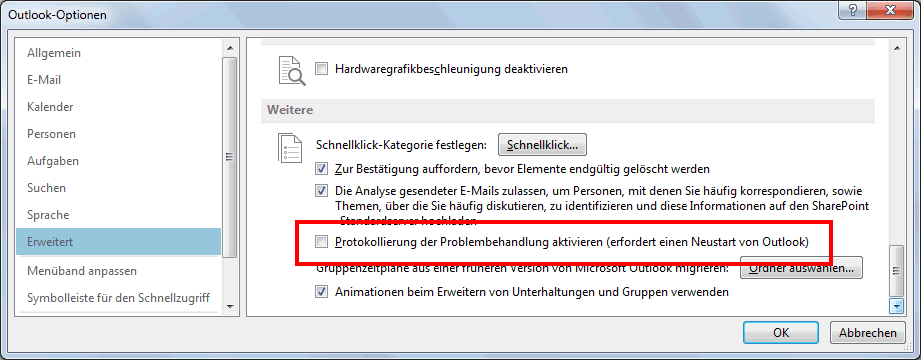


Outlook Client Logging


Softgrid Notes



Compile Windowsupdate Log On Windows 10 Or Higher Community


2
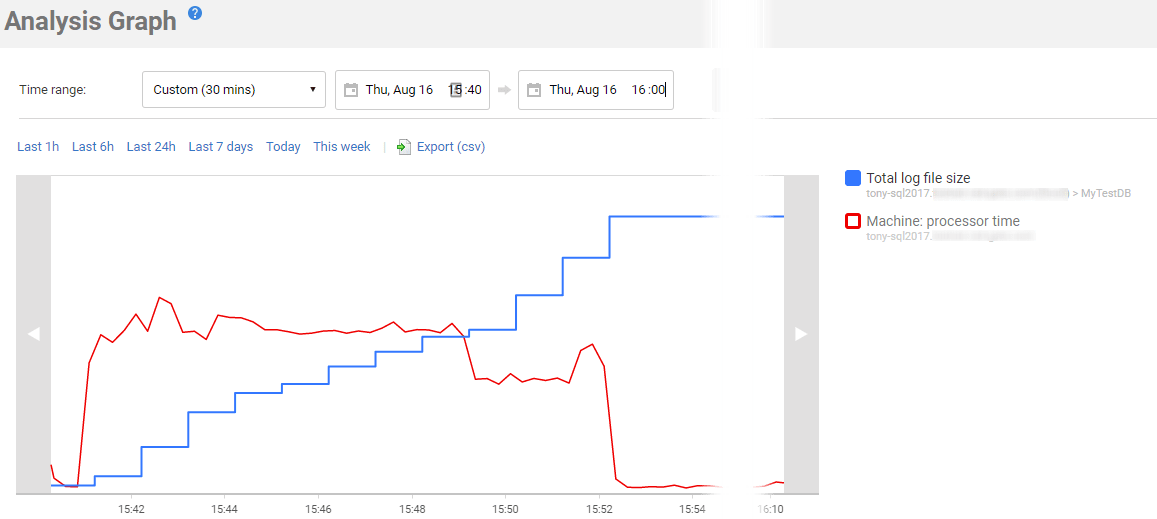


Avoid Running Out Of Disk Space Ever Again Using Sql Monitor Redgate Software


Www Champlain Edu Documents Lcdi Windows 10 forensics Pdf
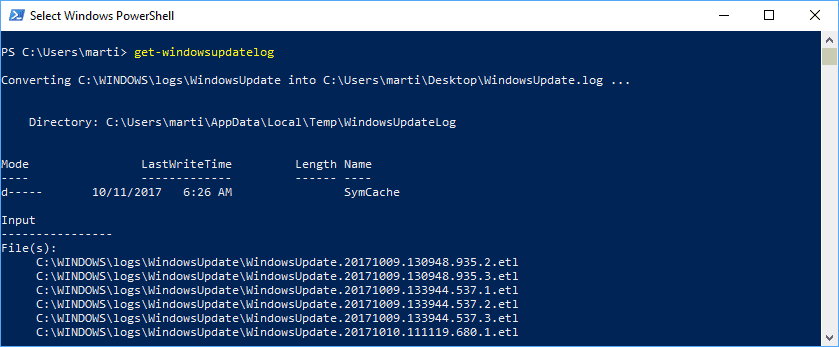


Microsoft Improves Windows Update Log Formatting In Windows 10 Version 1709 Ghacks Tech News



Report Http Cookie Microsoft Windows



Enable And Collect Logs For Profile Creation Issues Outlook Microsoft Docs


Oteledata Etl Files Being Created Causing Performance Issues And Space Issues


Oteledata Etl Files Being Created Causing Performance Issues And Space Issues


Outlook Logging Folder Consumes All Disk Space



Etw Event Tracing For Windows And Etl Files Hacking Exposed Computer Forensics Blog



85bf9dd2db57b7903d0a1a6e9f1d66d6bed0c19ec09ec24 Any Run Free Malware Sandbox Online



Potential Remote Hack Hijack Need Assistance Virus Trojan Spyware And Malware Removal Help



Need A Check Virus Trojan Spyware And Malware Removal Help



Avast Free Antivirus Files Folders And Registry Keys Find All Software



Animus Prime Outlook Troubleshooting Enable Logging


Www Sans Org Reading Room Whitepapers Tools Practical Process Analysis Automating Process Log Analysis Powershell


How To View And Parse Windowsupdate Log On Windows 10 Windows Server 16 Windows Os Hub



Enable And Collect Logs For Profile Creation Issues Outlook Microsoft Docs


コメント
コメントを投稿